
17 Feb How to Color Code with Artful Agenda
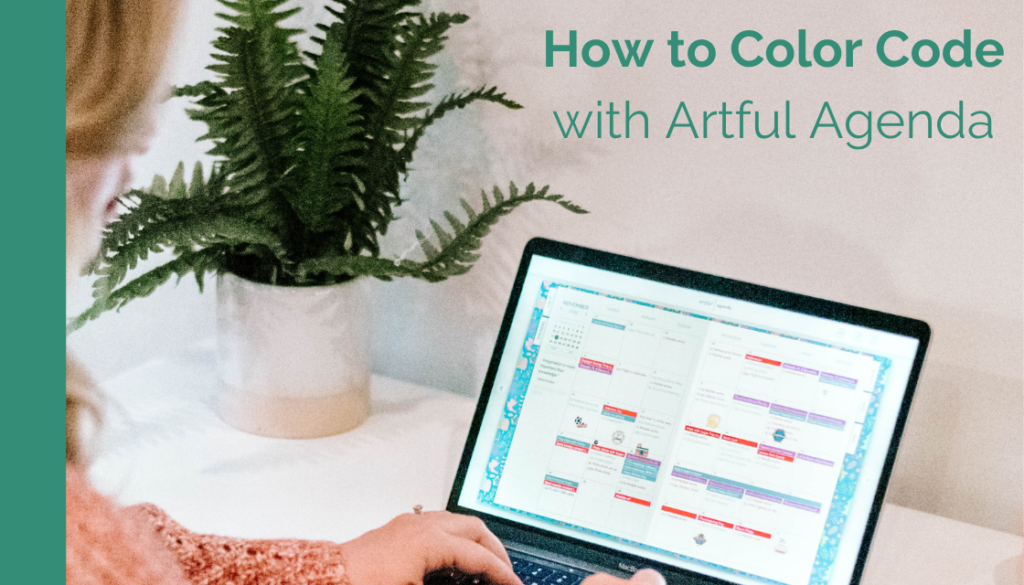
Color coding your Artful Agenda is more than just a pretty way to spruce up your planner; it’s a powerful organizational tool that can significantly boost your productivity, especially if you are a visual thinker. The vibrant color cues help make crucial information stand out, allowing for more efficient processing. Expert planners employ various methods to harness the full potential of color coding. Let’s explore four popular and highly effective color coding strategies to level up your planning game.
Color Coding by Category
You can organize your calendar by segmenting it into key areas of your life such as Personal, Family, Work, and Kids’ Activities. Assign a unique color to each category to efficiently track appointments, deadlines, and scheduled time blocks. This method ensures that important events and commitments are visually distinct and easily identifiable within your planner.
By color coding your calendar in this manner, you create a visual roadmap that streamlines your planning process and ensures that you stay on top of your various responsibilities. For example, assigning the color blue to work-related tasks and appointments allows you to quickly identify and prioritize your professional commitments.
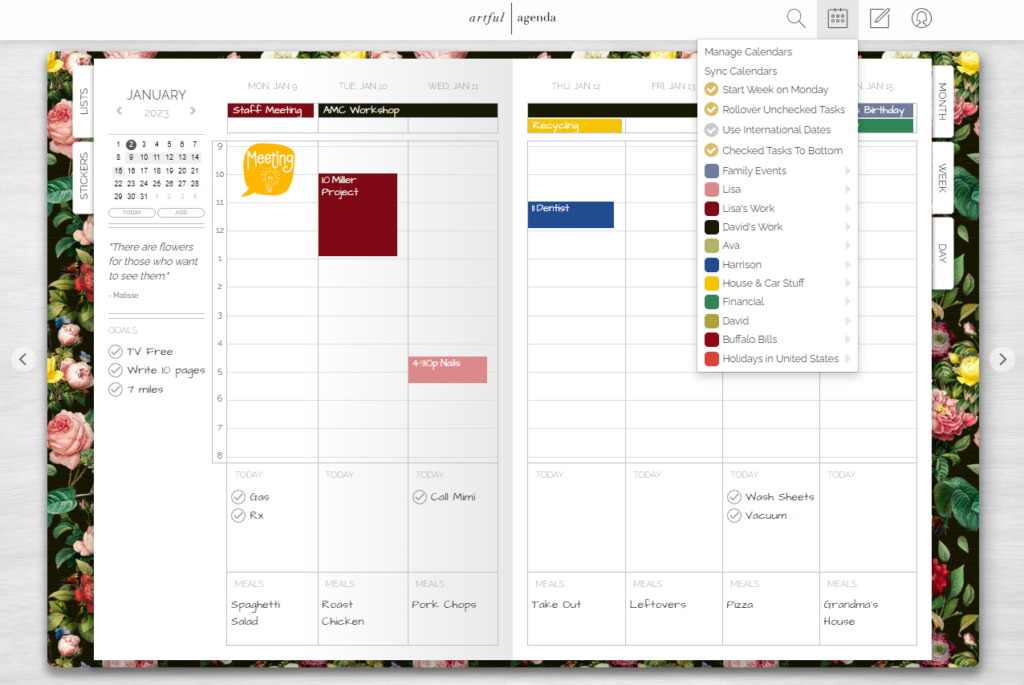
Color Coding by Urgency
If you tend to procrastinate or feel overwhelmed by looming deadlines, consider adopting a stoplight system to prioritize your tasks. Assign red to urgent projects with imminent deadlines, and yellow to important but less time-sensitive matters, and green to work with no immediate deadline. This color coded approach provides a visual cue that helps you focus on what needs immediate attention while also ensuring that less urgent tasks don’t slip through the cracks.
For instance, marking an upcoming project deadline in red prompts you to allocate dedicated time and resources to meet it, while using yellow for tasks like scheduling appointments or responding to emails reminds you to address them promptly without feeling overwhelmed. By incorporating this stoplight system into your Artful Agenda, you’ll effectively manage your priorities and improve your productivity.

Color Coding by Project or Class
This method is perfect for students or professionals managing various projects simultaneously. Allocate a distinct color to each project or class, and leverage Artful Agenda to dedicate study or work sessions accordingly. This method allows you to visualize deadlines, allocate time effectively, and maintain a balanced workload.
For instance, assigning a specific color to each project, such as blue for your History class or green for a Marketing project, enables you to identify and prioritize tasks related to each endeavor quickly. By organizing your schedule in this way, you can ensure that you spend sufficient time on each project, meet deadlines efficiently, and maintain a sense of clarity and focus despite your busy schedule.
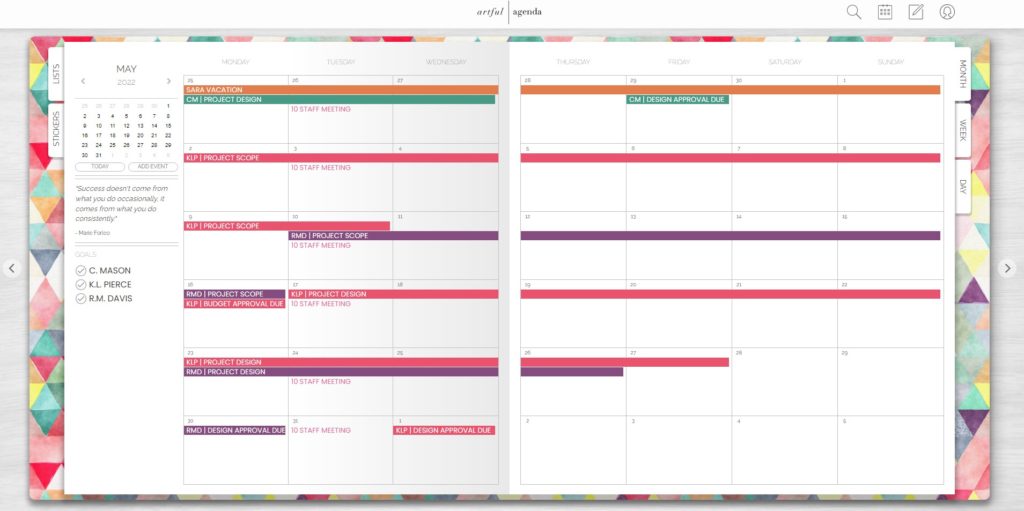
Color Coding by Blocks of Time
If visualizing the time required for each task could aid in scheduling your day effectively, consider employing color coding by time blocks. This method allows you to segment tasks based on their estimated duration or the time you wish to allocate to them. For example:
- Allocate a three-hour time block for a significant work or school project, aiming to complete it within that timeframe.
- Dedicate 30 minutes to tidying up a specific room in your house, even if you can’t finish the job within that time.
- Reserve 15 minutes at the start of your day for reading your preferred news source or favorite blog, minimizing distractions later on.
To implement this method, assign distinct colors to different time increments, such as 15 minutes, 30 minutes, an hour, and three hours. Then, integrate these color-coded time blocks into your Artful Agenda schedule, ensuring efficient time management and task prioritization.
How to Use Artful Agenda to Color Code
To implement these methods in Artful Agenda, create separate calendars for each category and assign them colors under Calendar Settings. You can either input a hex code, choose from a variety of colors in the default Quick Select Color Palette, or if you have Artful Plus create a custom color palette.
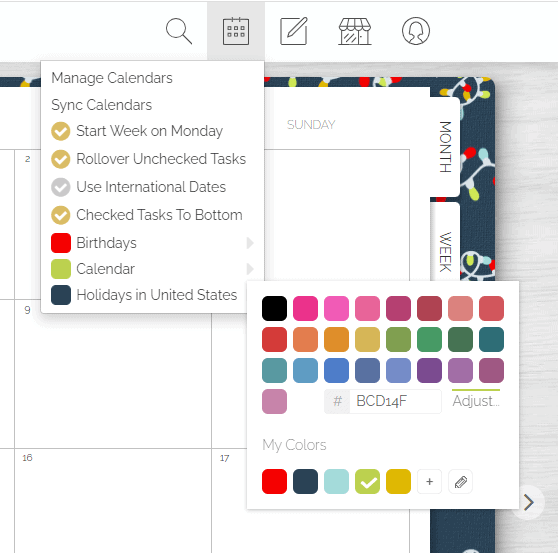
Remember, there’s no one-size-fits-all approach to color coding. If one method doesn’t click for you, try another until you discover your perfect system. Experiment until you find what works best for you!
If you haven’t yet embraced color coding as a tool for a more productive day with Artful Agenda, try it for FREE for two weeks!

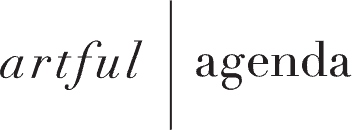

No Comments